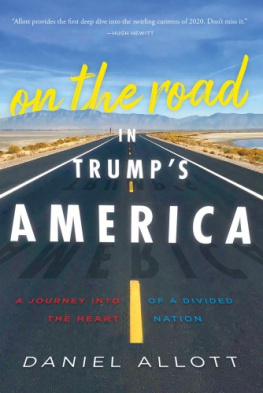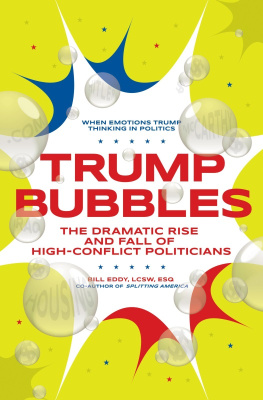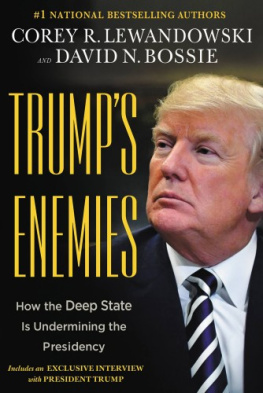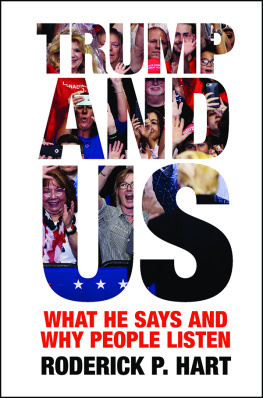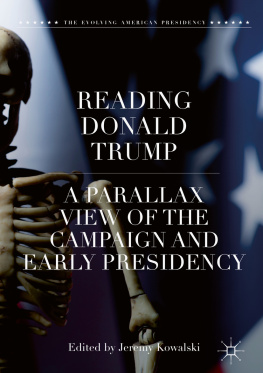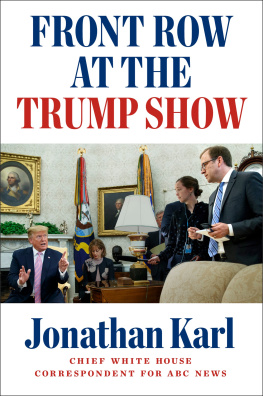Copyright 2020 Daniel Allott
FIRST EDITION
All rights reserved. No part of this book may be reproduced in any form or by any electronic or mechanical means, including information storage and retrieval systems, without permission in writing from the publisher, except by a reviewer, who may quote brief passages in a review. All information included in this book is based on the Authors recollections, opinions, and views. Publisher makes no representations, warranties, guarantees or otherwise with respect to the accuracy or completeness of the contents of this book.
Portions of this work are based in part of previously published articles that originally appeared in the Washington Examiner and National Review Online between 2017 and 2019.
ISBN 9781645720188 (Hardcover) 9781645720195 (ebook)
For inquiries about volume orders, please contact:
Republic Book Publishers
501 Slaters Lane #206
Alexandria VA 22314
Published in the United States by Republic Book Publishers
Distributed by Independent Publishers Group
www.ipgbook.com
Book designed by Mark Karis
Printed in the United States of America
To the memory of my beloved mother, Leslie Allott. CONTENTS INTRODUCTION
AN ESSENTIAL PART of a journalists responsibility is to listen, observe, ask good questions, and then listen some more. For too long, too few journalists have taken this responsibility seriously. This has been particularly true in the Trump era. Most political journalists failed to anticipate Donald Trumps rise because they were utterly unable to understand his appeal. From the start, they treated Trumpism as a pathology. They dismissed his voters as being guided by bigotry, ignorance, and fear. Needless to say, this has skewed their coverage.
Worst of all, no one seems to have learned anything. The media malpractice that characterized the 2016 presidential campaign has arguably become even worse during the Trump presidency. Most of the media have remained unwilling or unable to understand and objectively report on the people and places that put Trump in the White House. Thats partly because most political journalists disagree with Trumps politics. Its also because most live and work in large coastal cities, geographically and culturally removed from the rural communities and Rust Belt towns that delivered the election to Trump. The Washington media is a small, isolated, and insular club whose members talk to and about one another. They are largely oblivious to what happens elsewhere around the country.
When reporters do venture into Trumps America, they typically parachute in for only a few hours in search of evidence to confirm their pre-written narratives. As Jill Abramson, former executive editor of the New York Times, wrote in 2019, in most of the news media there is little evidence that reporters have fulfilled their pledge to report on and reflect the interests and values of the people who voted for (Trump). There have been some good dispatches from the heartland, but too often what is published amounts to the proverbial toe touch in Appalachia.
This books purpose is to provide some balance by taking a different approach. In spring 2017, I left my position at a Washington, DC, political magazine and began reporting from across the country. I spent most of the following three years living in and reporting from nine counties that were crucial to understanding the 2016 election; they will be equally crucial to determining who will win in 2020. The nine counties are scattered across nine statesin Florida and North Carolina, through Appalachia, the industrial heartland, and across the Upper Midwest, to the western states of Utah and California. The counties differ widely, ranging from two-stoplight Howard County, Iowa, to sprawling Orange County, California, whose population exceeds that of twenty states; from majority-minority Robeson County, North Carolina, to rural Grant County, West Virginia, where 99 percent of residents are white. I selected each county with one idea in mind: Each had to reveal something important and interesting about the Trump phenomenon or politics in the Trump era.
This book is not just a study of Trump voters. I spoke with as many people as I could, regardless of their politics. My one preference was for switcherspeople who voted one way in 2016 and have subsequently changed their minds ahead of the 2020 election. I discovered that these voters are like an endangered species in Trumps America. I interviewed farmers and professors; congressmen and homeless people; refugees and drug addicts; students and retirees; progressives, conservatives, and people with no discernible or consistent political ideology.
Six of the nine counties are Obama-Trump counties, meaning they voted for Barack Obama for president before switching to Trump; one is a historically Republican county, and two are formerly Republican counties that are now trending Democratic. I entered these counties with no agenda other than to listen, learn, and report. To do this, I spent weeks at a time in each, returning to them again and again. I hope and believe that my consistent presence, my thoughtful questions, my willingness to listen, and my desire to understand helped me to develop a deep level of trust and goodwill with many of the people I met. And because I returned numerous times, I was able to track how my subjects views, priorities, and circumstances changed over the course of Trumps first term in office. When people noticed that I was staying in their community for long stretches and returning, it communicated to them that I was committed to understanding. On numerous occasions, I heard comments to the effect that, Im so glad youll be here two weeks instead of just a day.
This account includes tales of job loss and gain; of social alienation and reconciliation; of addiction, recovery, and relapse; and of relationships strained or torn apart over arguments about Donald Trump. I recorded my interviews whenever I could. This allowed me to maintain eye contact and read body language, and to convey with mine that I was interested and really listening. I learned that people opened up to me when I signaled a sincere interest in what they had to say. Spending more time with them allowed me to move beyond politics to explore intimate subjects of values, family, and loss.
Just as revealing as the hundreds of formal interviews I conducted were the thousands of informal encounters and impressions and observations I gathered while on the road. Some people were reluctant to meet with meunderstandable, given the deep distrust of the media that exists in America today. Others, such as retired manufacturing worker Allen Ewanick, simply wondered why I was interested in learning their opinion at all.
I was a little reluctant to meet with you, Ewanick confessed as he pulled a chair up across from me at the outdoor seating area of a gastropub on the outskirts of Erie, Pennsylvania. I was like, Why does he want to meet with me? I dont have any pearls of wisdom, or earth-shattering viewpoint. But I didnt want to be closed-minded. I think its important for people to see other peoples viewpointsthe average working guy or whatever. I felt it was particularly important to visit rural places, where people have felt especially neglected and misunderstood.
One frigid February night in 2018, I drove Mike Gooder home in his car after watching President Trump deliver his first State of the Union address. Mike had helped me convene a group of a dozen or so local people for a watch party at The Pub, a bar in Cresco, a small city in Howard County, Iowa. I was feeling somewhat dejected at the time, questioning whether I should continue my research. But as would often happen during this three-year journey, something occurred that buoyed my spirits enough to keep me going. In this case it was Mike, a few drinks in him, telling me how much he appreciated my attempts to understand his community. Were just some dumb-fucks from rural Iowa to most of the media, he said. But youre making an effort to get to know this place and to tell its story. Regardless of how we are portrayed, at least youre giving us a voice. I appreciate that.
Next page
